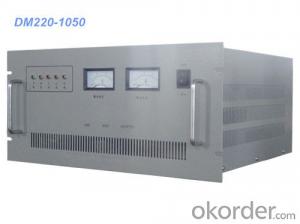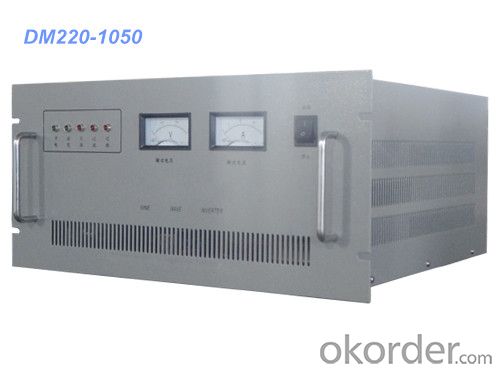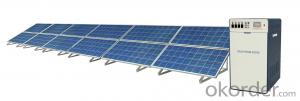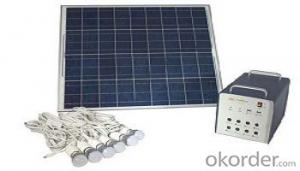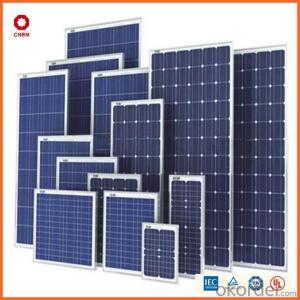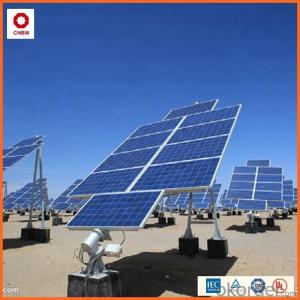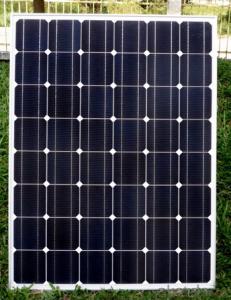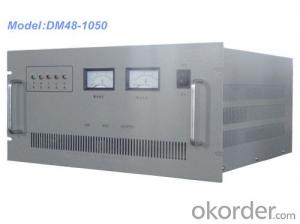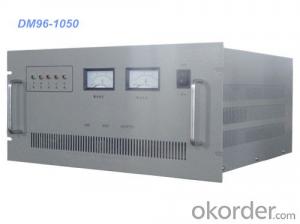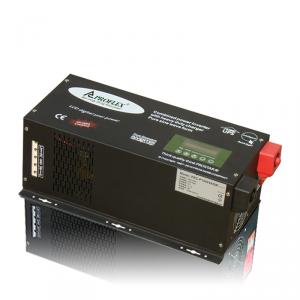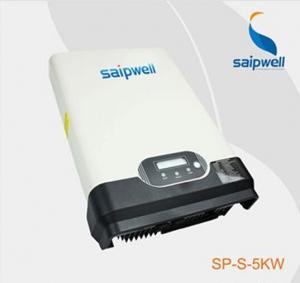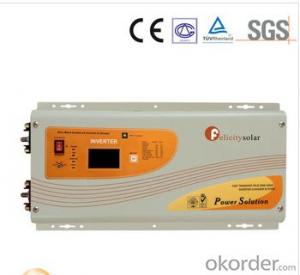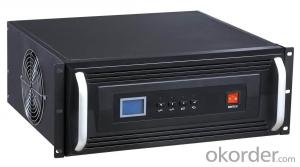Mountaintop Solar Energy Systems - Pure Sine Wave Inverter/ Solar Power Inverter 5kVA 220V with Isolate Transformer
- Loading Port:
- Qingdao
- Payment Terms:
- TT OR LC
- Min Order Qty:
- 1 unit
- Supply Capability:
- 800 unit/month
OKorder Service Pledge
OKorder Financial Service
You Might Also Like
Specifications
1.using IGBT from Mitsubishi company
2.using American ATEMEL company microprocessor
3.Max. Efficiency>94%
Features:
1. using IGBT from Mitsubishi company as the power components
2. using American ATEMEL company microprocessor as figure controller
3. perfect protection and warning functions
4. circuit frame compact,Max. Efficiency≥94%
5. with wide input voltage range
6. RS232/485 communication,multi communication interface can be selected
7. big-screen English LCD, perfect display, interface-friendly
Off Grid Pure Sine Wave Inverter 5KW 96/110/120V for wind power and PV power with factory price
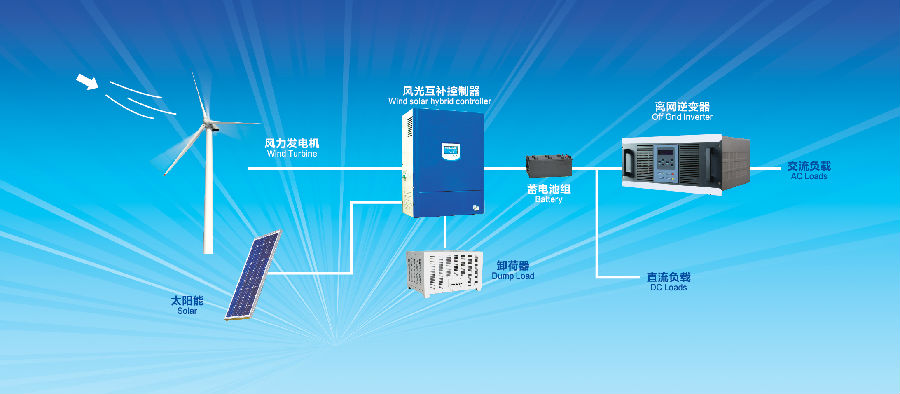
Technical Data Sheet
Type | ND220-5KD | ||||
DC input | Input rated voltage | 220 VDC | |||
Input rated current | 22.7 A | ||||
Input DC voltage range | 180-300 VDC | ||||
AC input | Allow input voltage range | 110 VAC / 120 VAC / 220 VAC / 240 VAC ± 15% | |||
Input rated current | 45.5A / 41.7A / 22.5 A / 21A | ||||
Bypass transfer time | ≦4 ms | ||||
AC output | Rated capacity | 5KVA | |||
Output rated power | 4KW | ||||
Output rated voltage and frequency | 110 VAC / 120 VAC / 220 VAC / 240 VAC,50Hz / 60Hz | ||||
Output rated current | 45.5A / 41.7A / 22.5 A / 21A | ||||
Output voltage accuracy | 110 VAC / 120 VAC / 220 VAC / 240 VAC± 2% | ||||
Output frequency accuracy | 50Hz / 60Hz ± 0.05% | ||||
Waveform distortion (THD). | ≤3% | ||||
Dynamic response time | 5% | ||||
Power factor (PF) | 0.8 | ||||
Overload capacity | 120%,3minutes,150%,10second | ||||
Crest factor (CF) | 3:1 | ||||
Inverter efficiency | 90% | ||||
Working Environment | Dielectric strength | 1500VAC,1minute | |||
Noise (1m) | ≤50dB | ||||
Ambient temperature | -10℃~+50℃ | ||||
Humidity | 0~90%,No condensation | ||||
Altitude | ≤5000 m | ||||
Industrial Frequency Transformer | Yes | ||||
Production function | Input reverse protection, input under-voltage protection, output overload protection, output short circuit protection, thermal protection | ||||
Dimensions | 482*420*223mm | ||||
Weight | 52kg | ||||
- Q: How do solar energy systems affect air conditioning costs?
- Solar energy systems can significantly reduce air conditioning costs as they generate electricity from the sun, offsetting the need for traditional energy sources. By harnessing solar power, homeowners can power their air conditioning units without relying heavily on the grid, resulting in lower energy bills and decreased dependence on fossil fuels.
- Q: Can solar energy systems be used for powering transportation systems?
- Transportation systems can indeed utilize solar energy. The utilization of solar power can occur through the installation of photovoltaic (PV) panels or concentrated solar power (CSP) systems to generate electricity. This electricity can then be used to power electric vehicles (EVs) or be converted into hydrogen fuel via electrolysis to power hydrogen fuel cell vehicles (FCVs). Charging the batteries of EVs can be directly achieved by installing PV panels on vehicles or charging stations. This technology is already being implemented in various electric cars and buses. Furthermore, solar charging stations can be established along highways or at designated parking lots to provide renewable energy for EVs while on the move. In the case of FCVs, solar power can be employed to generate hydrogen through electrolysis, a process that splits water into hydrogen and oxygen using electricity. The resulting hydrogen gas can be stored and utilized to power FCVs, with only water vapor being emitted as a byproduct. Solar-powered transportation systems offer numerous advantages. Firstly, they reduce reliance on fossil fuels, thereby assisting in the mitigation of climate change and the reduction of greenhouse gas emissions. Additionally, they contribute to energy independence and diminish dependence on imported oil. Solar energy is abundant, renewable, and readily accessible, rendering it a sustainable option for powering transportation. Nevertheless, there are certain challenges to consider. It is necessary to enhance the efficiency of PV panels and hydrogen production technologies in order to make solar-powered transportation more feasible on a larger scale. Moreover, the initial cost associated with implementing solar energy systems for transportation infrastructure can be substantial, although the long-term operational costs are generally lower. In conclusion, solar energy systems possess the potential to revolutionize transportation by supplying clean and renewable energy. As technology progresses and costs decrease, solar-powered transportation will become increasingly viable and widespread.
- Q: Can solar energy systems be used in areas with limited access to solar energy net metering programs?
- Yes, solar energy systems can still be used in areas with limited access to solar energy net metering programs. While net metering programs can provide financial benefits by allowing excess solar energy to be sold back to the grid, solar energy systems can still generate electricity for on-site consumption even without a net metering program. This can help reduce reliance on traditional grid power and provide a more sustainable and cost-effective energy solution in areas with limited access to net metering programs.
- Q: Can solar energy systems be used in powering electric fences or security systems?
- Yes, solar energy systems can certainly be used in powering electric fences or security systems. Solar panels can generate electricity by converting sunlight into energy, which can then be stored in batteries or used directly to power various devices. This makes solar energy systems a practical and sustainable choice for powering electric fences or security systems, especially in remote or off-grid locations where traditional power sources may be unavailable or unreliable. Solar-powered electric fences can effectively deter intruders or keep animals within a designated area, while solar-powered security systems can provide continuous surveillance and monitoring without the need for a constant supply of electricity. Additionally, solar energy systems are environmentally friendly and can help reduce carbon emissions associated with conventional power sources, making them an increasingly popular and cost-effective solution for powering various applications, including electric fences and security systems.
- Q: How does net metering work?
- Net metering is a billing arrangement that allows solar panel owners to earn credits for excess electricity they generate and feed back into the grid. Essentially, it works by measuring the difference between the electricity a consumer consumes from the grid and the surplus electricity they produce. This surplus is then credited to their account, offsetting their future energy consumption and allowing them to save money on their utility bills.
- Q: Can solar energy systems be used for powering off-grid weather monitoring stations?
- Yes, solar energy systems can be used for powering off-grid weather monitoring stations. Solar panels can capture sunlight and convert it into electricity, which can then be stored in batteries for use during cloudy days or at night. This allows weather monitoring stations to operate independently without relying on a grid connection for power supply.
- Q: Are there any risks of theft or vandalism with solar energy systems?
- Solar energy systems do come with some risks of theft or vandalism. Valuable solar panels and equipment used in these systems can attract thieves who may try to sell them on the black market. Moreover, since solar energy systems are usually installed in remote or isolated areas, they are more susceptible to theft as they may not be easily monitored. Vandalism is also a concern as solar panels can be intentionally damaged or destroyed by individuals with a grudge against the owner or simply for the sake of causing damage. This can result in financial loss and disruption of energy production. To mitigate these risks, homeowners and businesses can take various precautions. Installing security measures like surveillance cameras, motion sensors, or alarms can deter theft or vandalism. Placing panels in visible and easily accessible locations can also make them less appealing to potential thieves. Additionally, marking the panels with unique identifiers can make it harder for thieves to sell them. Insurance coverage is another crucial consideration to safeguard against theft or vandalism. Many insurance companies offer specialized policies that cover solar energy systems, providing compensation in case of theft or damage. In summary, although there are risks of theft or vandalism associated with solar energy systems, these risks can be minimized through preventive measures and insurance coverage. It is important for owners of solar energy systems to be aware of these risks and take appropriate steps to safeguard their investment.
- Q: Can a solar energy system be used in conjunction with other renewable energy sources?
- Yes, a solar energy system can definitely be used in conjunction with other renewable energy sources. In fact, combining different renewable energy sources like solar, wind, hydro, or geothermal can provide a more reliable and efficient energy system. This approach, known as hybrid renewable energy systems, allows for a diversified and balanced energy supply, ensuring continuous power generation even when one source is not available or producing at full capacity.
- Q: Can a solar energy system be used in areas prone to hurricanes or tornadoes?
- Yes, a solar energy system can be used in areas prone to hurricanes or tornadoes. While it is true that these natural disasters can cause damage to solar panels and other components of the system, proper planning and installation can mitigate the risks. One key consideration is the design and structural integrity of the solar panels themselves. High-quality solar panels are built to withstand strong winds and extreme weather conditions. They are usually tested and certified to meet specific standards, including wind resistance ratings. In areas prone to hurricanes or tornadoes, it is important to install solar panels that are specifically designed to withstand the potential wind speeds and impacts associated with these events. Additionally, proper installation techniques can enhance the resilience of a solar energy system. For example, using reinforced mounting structures, securing panels with additional brackets or fasteners, and ensuring secure connections between panels, inverters, and batteries can help prevent damage caused by strong winds or flying debris. In some cases, homeowners may also choose to invest in solar panel tracking systems that allow the panels to automatically adjust their position to reduce wind resistance during extreme weather events. This feature can help protect the panels and increase their chances of surviving a hurricane or tornado with minimal damage. Furthermore, it is essential to have a backup power storage system in place, such as batteries, to ensure continuous power supply during and after a severe weather event. This backup system can store excess energy generated by the solar panels, allowing the system to operate independently of the grid during power outages caused by hurricanes or tornadoes. Overall, while there are risks associated with using a solar energy system in areas prone to hurricanes or tornadoes, careful planning, proper installation, and the use of resilient components can make it possible to harness solar power even in these challenging environments.
- Q: What are the maintenance requirements for solar energy systems?
- Maintenance requirements for solar energy systems can vary depending on the type and size of the system. Generally, solar panels are low-maintenance and require minimal upkeep. However, there are a few key maintenance tasks that can ensure the optimal performance and longevity of the system. One important maintenance requirement is regular cleaning of the solar panels. Dust, dirt, leaves, and other debris can accumulate on the surface of the panels, reducing their efficiency. Cleaning the panels with a soft cloth or a gentle spray of water can help remove any build-up and maximize their energy production. Another maintenance task is checking the wiring and connections of the solar system. Over time, the wires can become loose or damaged, compromising the system's performance. Regular inspections and tightening of connections can help prevent any issues and ensure the smooth operation of the system. Monitoring the system's performance is also essential for maintenance. Most solar systems come with monitoring software that allows homeowners to track the energy production and identify any potential issues. Monitoring the system regularly can help detect any drop in performance or malfunctioning components, enabling timely repairs or replacements. In addition to these tasks, it is recommended to have a professional inspection of the solar energy system every few years. A qualified technician can thoroughly evaluate the system's components, including the panels, inverters, and batteries if present. They can identify any signs of wear or damage and address them before they become major problems. Overall, the maintenance requirements for solar energy systems are relatively low, but regular cleaning, checking connections, monitoring performance, and periodic professional inspections are crucial to ensure the optimal functioning and longevity of the system.
Send your message to us
Mountaintop Solar Energy Systems - Pure Sine Wave Inverter/ Solar Power Inverter 5kVA 220V with Isolate Transformer
- Loading Port:
- Qingdao
- Payment Terms:
- TT OR LC
- Min Order Qty:
- 1 unit
- Supply Capability:
- 800 unit/month
OKorder Service Pledge
OKorder Financial Service
Similar products
Hot products
Hot Searches
Related keywords
